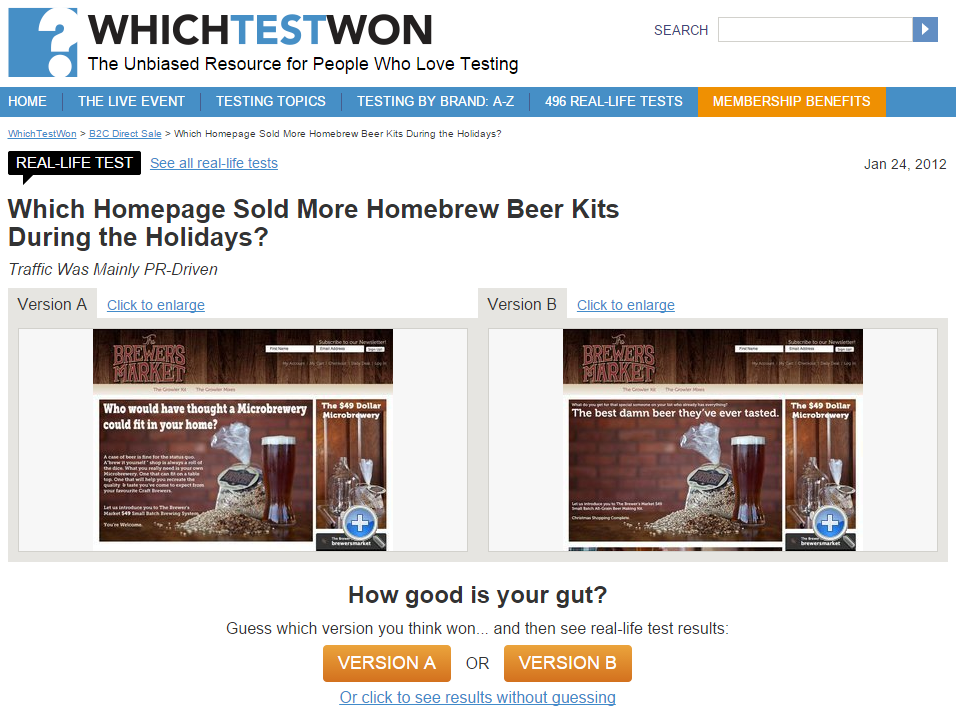Target (and reduce) your copy depending on time of year and who is being bought for
Quick blog this morning after participating in a ‘Which Test Won’ test, comparing homepage copy on a Canadian brewing website.
In line with an earlier blog by Natalie Ashes arguing that eCommerce websites and retailers should simplify and limit their copy leading up to Christmas, the test on the brewing website found the same conclusion as well as one other.
Two alternative homepages were compared. (I have provided a screenshot of the test rather than a link to the test because Which Test Won take down their tests after a short period.):

Homepage Variant #1
The key elements of the first version of the homepage were:
- The main headline: ‘Who would have thought a Microbrewery could fit in your room?’
- A long paragraph or two of text, introducing the concept of the home brewing product.
Homepage Variant #2
Conversely, the key elements of the second version of the homepage were:
- The main headline: ‘The best damn beer they’ve ever tasted.’
- No long paragraph introducing the home brewing product.
Result and conclusion?
Variant #2’s sales initially beat #1 by almost 19%, though ten days out from Christmas, #2’s sales jumped to almost 61% more than #1’s sales.
Conclusion 1: During times where there is urgency about buying gifts, users are less phased about reading and absorbing product information and are more driven by ease of buying. Long paragraphs of text implies that it needs to be read: an emotional barrier to purchase.
As with Natalie Ashes’ blog on the topic of website content and copy for Christmas, reduce it.
Conclusion 2: The headline of #1 referenced ‘you’, the buyer, whereas #2 referenced ‘they’, the person receiving the gift. #2 is far closer to aligning itself with the mind-set of the purchaser.
Add to that that #2’s headline is pretty compelling – and if true, and awesome gift – and you’re onto a homepage winner.
A/B testing is a no-brainer for any website and without it, this Canadian brewer wouldn’t know what they now know. Introduce A/B testing as part of your continual website program and use it to help guide your decisions.
And consider when and why people are on your website and adapt to it.







